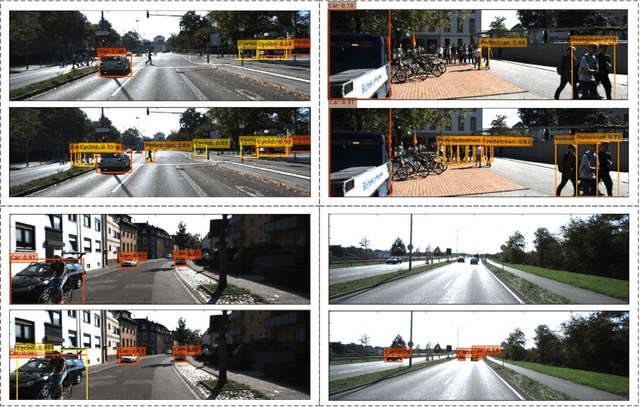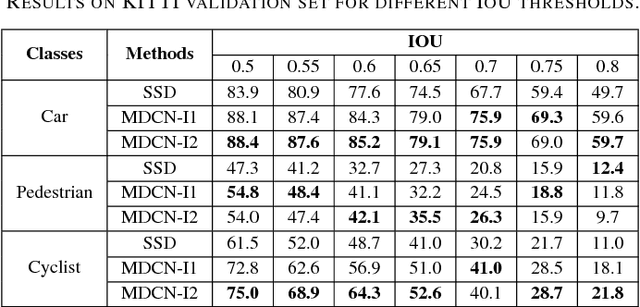Zongbo Wang
Efficient Golf Ball Detection and Tracking Based on Convolutional Neural Networks and Kalman Filter
Dec 17, 2020



Abstract:This paper focuses on the problem of online golf ball detection and tracking from image sequences. An efficient real-time approach is proposed by exploiting convolutional neural networks (CNN) based object detection and a Kalman filter based prediction. Five classical deep learning-based object detection networks are implemented and evaluated for ball detection, including YOLO v3 and its tiny version, YOLO v4, Faster R-CNN, SSD, and RefineDet. The detection is performed on small image patches instead of the entire image to increase the performance of small ball detection. At the tracking stage, a discrete Kalman filter is employed to predict the location of the ball and a small image patch is cropped based on the prediction. Then, the object detector is utilized to refine the location of the ball and update the parameters of Kalman filter. In order to train the detection models and test the tracking algorithm, a collection of golf ball dataset is created and annotated. Extensive comparative experiments are performed to demonstrate the effectiveness and superior tracking performance of the proposed scheme.
MDCN: Multi-Scale, Deep Inception Convolutional Neural Networks for Efficient Object Detection
Sep 06, 2018



Abstract:Object detection in challenging situations such as scale variation, occlusion, and truncation depends not only on feature details but also on contextual information. Most previous networks emphasize too much on detailed feature extraction through deeper and wider networks, which may enhance the accuracy of object detection to certain extent. However, the feature details are easily being changed or washed out after passing through complicated filtering structures. To better handle these challenges, the paper proposes a novel framework, multi-scale, deep inception convolutional neural network (MDCN), which focuses on wider and broader object regions by activating feature maps produced in the deep part of the network. Instead of incepting inner layers in the shallow part of the network, multi-scale inceptions are introduced in the deep layers. The proposed framework integrates the contextual information into the learning process through a single-shot network structure. It is computational efficient and avoids the hard training problem of previous macro feature extraction network designed for shallow layers. Extensive experiments demonstrate the effectiveness and superior performance of MDCN over the state-of-the-art models.
 Add to Chrome
Add to Chrome Add to Firefox
Add to Firefox Add to Edge
Add to Edge